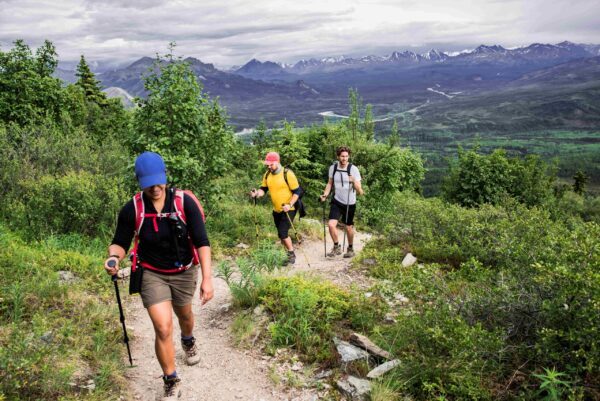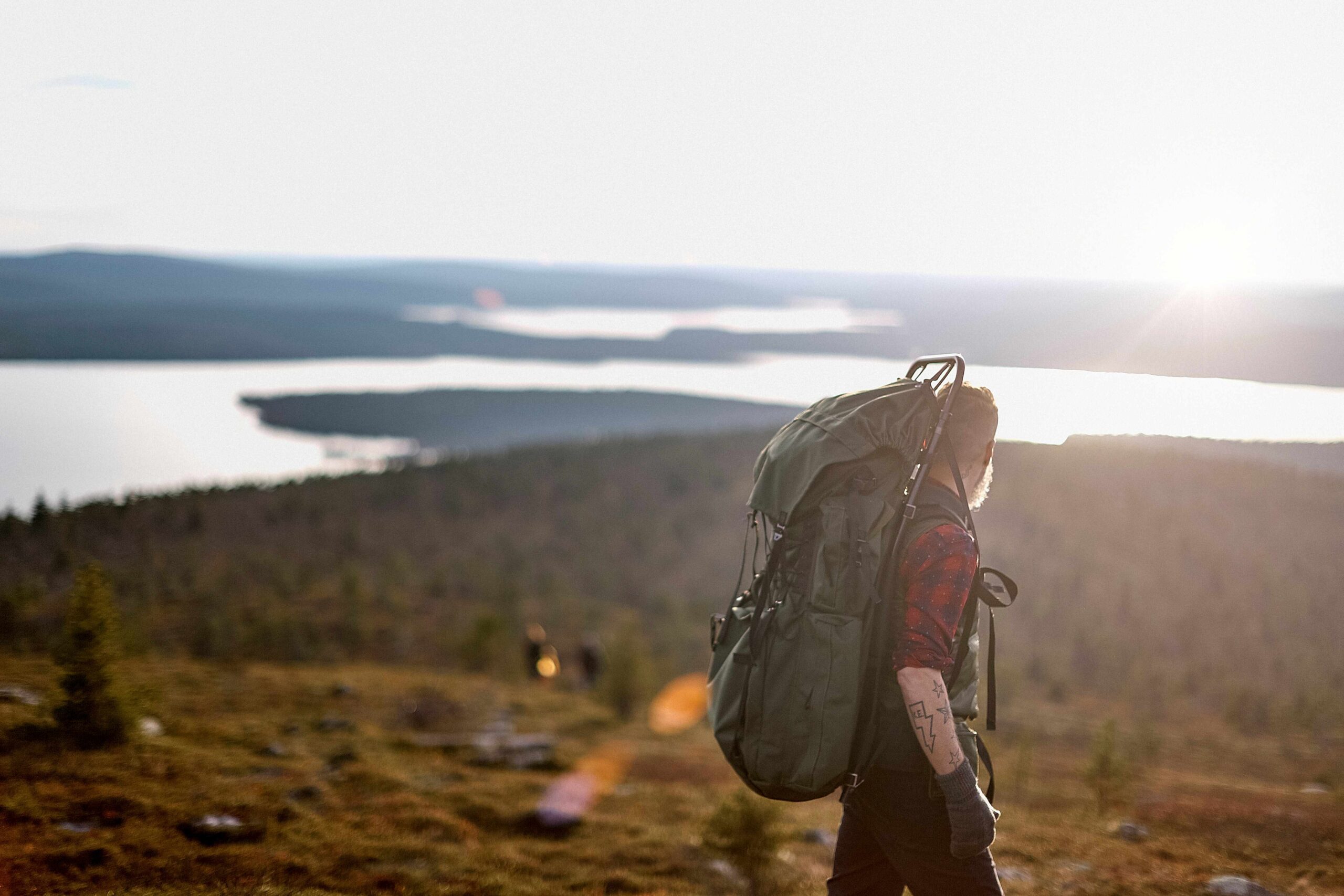
The Helags hike in Sweden begins quietly. The road ends at Kläppen, just beyond the small village of Ljungdalen in Jämtland. From here, travelers leave the world of engines behind and start the 12-kilometer journey on foot. The trail is well-marked, threading its way through birch trees that lean slightly with the wind, as if already pointing toward the mountains.
The path doesn’t rush. It rises slowly through heathland and across shallow streams. Some sections feel like a walk through open sky, others are hushed under forest canopy. It’s not dramatic at first—but that’s part of its charm. There’s time to settle into your steps, to hear the gravel shift underfoot, to feel your breath deepen.
Soon enough, the STF Helags Mountain Station appears—low and sturdy against the mountain slope. A cluster of wooden buildings stands against the backdrop of the Helags massif. It’s more than a waypoint—it’s a place to rest, refill a bottle, or pause to reconsider the next leg of the hike.
Beyond the station, the terrain begins to shift. Trails snake toward the glacier, and the ground becomes rockier, more exposed. As the altitude increases, so does the sense of openness. The glacier appears suddenly—stark and white even under a clouded sky.
For those continuing toward the 1,797-meter summit, the climb steepens. It’s not technical, but it demands attention.Boots knock against patches of lichen-covered rock, wind pulling gently at your sleeves… and then, stillness. From the top, Sweden stretches outward in all directions, with no border but the sky.
Even in summer, the weather can turn quickly. A fjäll hiking guide worth reading will always say the same thing: pack layers, waterproofs, and more food than you think you’ll need. This part of Sweden is beautiful—but indifferent. It offers no guarantees.
While the mountain station offers hot meals and warm beds, many hikers still choose to camp. For those attempting nordic trekking here, gear should be treated with the same respect as the trail. A sleeping bag that holds heat, a tent that holds its shape in wind—these are not just comforts; they’re essentials.
The STF station is surprisingly cozy. Shared dining rooms buzz gently with quiet conversations over reindeer stew and coffee. The sauna creaks with steam and laughter. Yet for some, the solitude of camping nearby offers a different kind of luxury.
Tents pepper the surrounding fields—pitched just far enough from one another to feel alone. At night, headlamps flicker like stars across the ground. The cold settles in, but so does a deep kind of peace. There’s no signal, no screen glow, just the slow breathing of a trail-weary body and the crackle of distant wind through grass.
For anyone unfamiliar with nordic trekking, a few things help.

First: don’t underestimate the daylight. Summer stretches long here, and dusk is slow to arrive. Take advantage of that. If the skies clear toward midday, there’s no harm in setting off later than planned. Rest when the sun feels strongest. Listen closely—your pack shifting, birds calling from somewhere unseen.
And pace matters. This isn’t a race. Fjäll hiking guides often note how terrain dictates tempo. Some paths require balance, others endurance. Give it time, and your body will find its rhythm.
The Helags hike Sweden offers isn’t only about the summit, though that view tends to stay with you. It’s about rhythm—about learning to move in sync with a place that doesn’t speak, but still says a lot.
You’ll remember the mossy stones, the wind at your back, the sound of boots echoing off a snow patch in July. And somewhere along the way—maybe during a snack break on a rock—you’ll stop thinking about time.
This route doesn’t shout. It waits. And in that waiting, something real unfolds.
Comments are closed